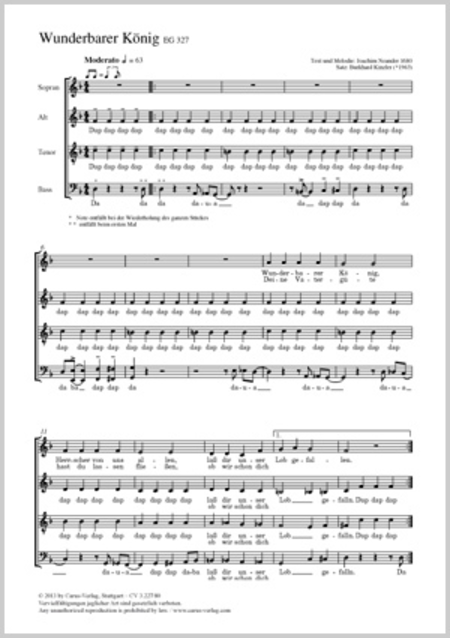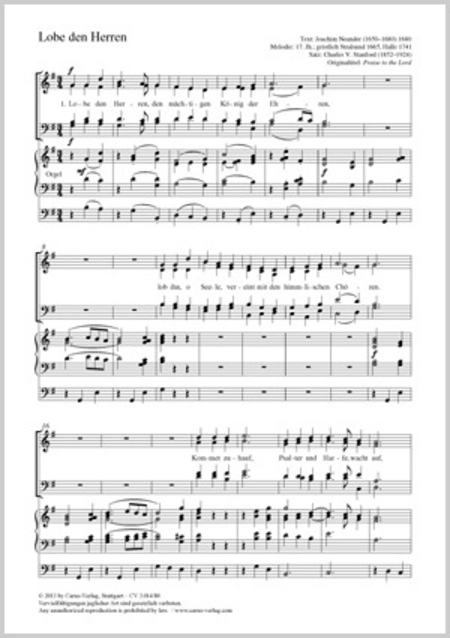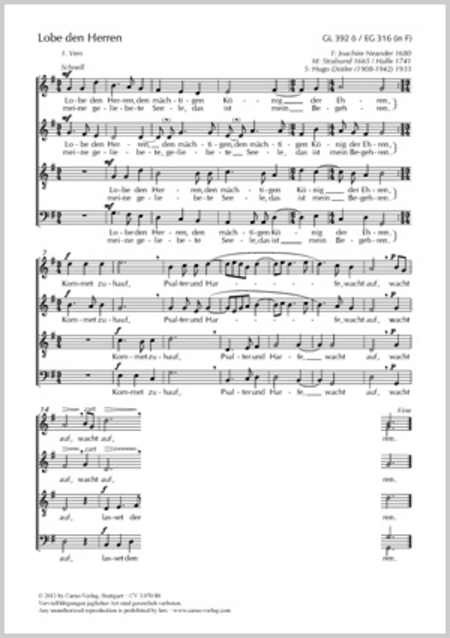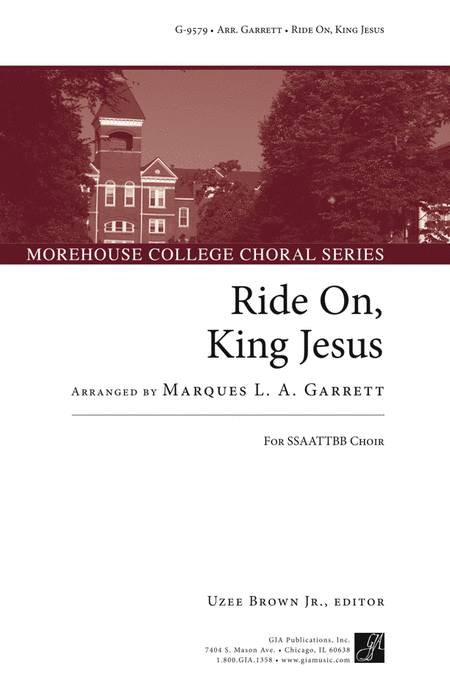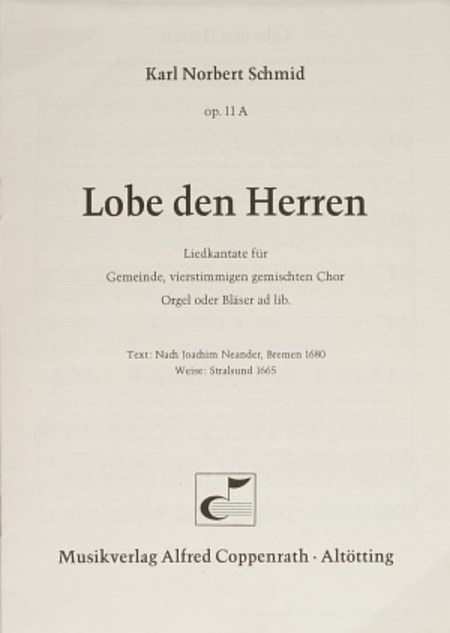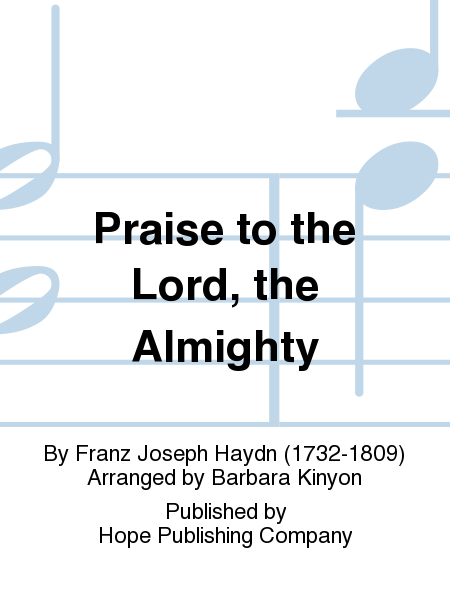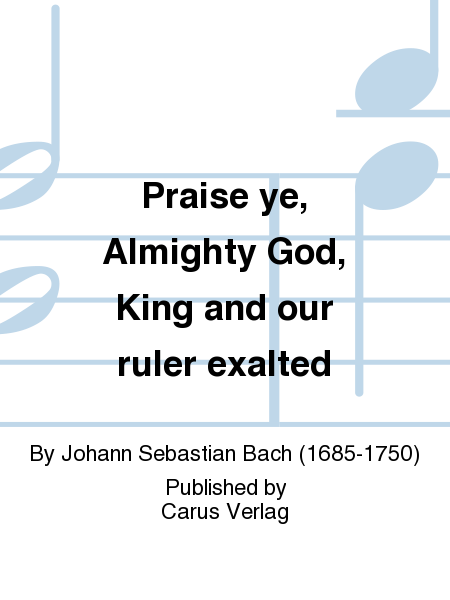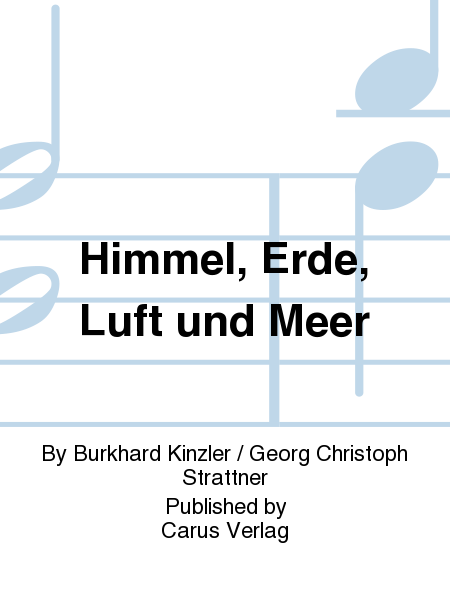Joachim Neander (1650 - 1680)
 Allemagne
Allemagne
Joachim Neander (Neumann) (1650 ? 31 May 1680) was a German Reformed (Calvinist) Church teacher, theologian and hymn writer whose most famous hymn, Praise to the Lord, the Almighty, the King of Creation (German: 'Lobe den Herren, den mächtigen Köni ... (Read all)
Source : Wikipedia
 Allemagne
AllemagneJoachim Neander (Neumann) (1650 ? 31 May 1680) was a German Reformed (Calvinist) Church teacher, theologian and hymn writer whose most famous hymn, Praise to the Lord, the Almighty, the King of Creation (German: 'Lobe den Herren, den mächtigen Köni ... (Read all)
Source : Wikipedia
Free sheet music of Joachim Neander
6 sheets found sorted by:
Search
| ||||||||||||||||||||||||||||||||||||||||
© 2000 - 2024
Home - New releases - Composers
Legal notice - Full version








